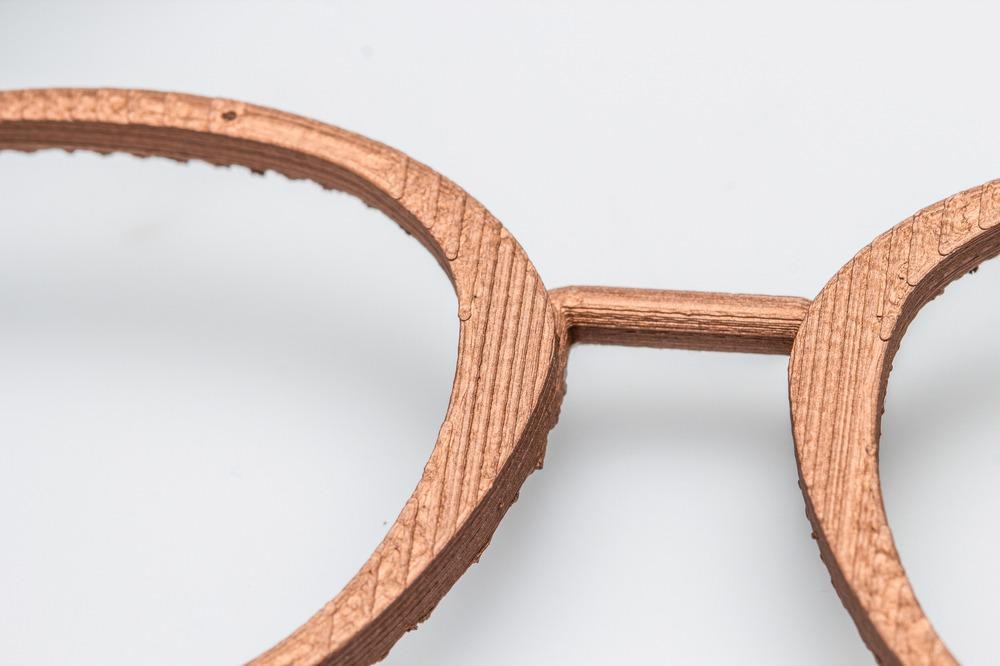New or waste wood can be milled to a fine powder and then mixed with binders like sodium silicate, cement, cellulose, gypsum, plastics, and adhesives to make a filament. These filaments can then used to 3D print objects, which will be discussed further in this article.

Image Credit: Emil Soeueud/Shutterstock.com
What is 3D Printing?
3D printing is a kind of computer-aided manufacturing (CAM) that enables the production of physical products via computer-aided designs (CAD). Compared to traditional manufacturing methods such as subtractive, joining, and formative methods, 3D printing technology provides low-cost customized products with efficient raw material utilization.
Several materials are used in this technology; commonly used polymers are acrylonitrile butadiene styrene (ABS), polylactic acid (PLA), polyamide, polyvinyl alcohol (PVAc), alongside inorganic materials including metals like gold, silver, stainless steel, titanium as well as concrete, sand, ceramics, and gypsum. However, the usage of costly materials, such as UV curing resins and ecologically toxic synthetic chemicals, has stifled the growth of 3D printing.
Wood as a 3D Printing Material
Wood is abundant in nature, and the usage of woody biomass in 3D printing has several advantages. Biomass combined with gypsum and plastic, multifunctional nanocomposites, and biopolymer can contribute to reducing the high cost and carbon footprint of 3D printed objects. Moreover, using wood for 3D printing results in environmentally friendly 3D printed parts.
Wood is firstly milled to a fine powder and then mixed with binders like sodium silicate, cement, cellulose, gypsum, plastics, and adhesives to make a filament. These filaments are then used to 3D print objects using different techniques.
3D Printing Techniques and Technologies
There are several types of 3D printing methods and technologies - those that can use wood powder are binder jetting, material jetting, powder bed fusion, and material extrusion.
3D scans of an object or unique designs can be made using CAD software. These designs are then converted to an additive manufacturing file (AMF) or STL (stereolithography) type. These files contain important features like material type, color, and dimensions. This file is then fed to the 3D printer, which prints the required component in accordance with the printing process. After the 3D printer prints the required part, it still needs post-processing procedures like machining and thermal or chemical treatments to obtain the final product.
Applications
Using 3D printers and wood powder with binders, wood cell models of variable magnification can be produced.
This technology has enabled scientists to produce wood-based complex structures fairly easily compared to traditional methods, which help make furniture of any desired shape or design. Wood powder from waste sources and thinning woods can also be used to 3D print desired products. Therefore, making a complex component using this technique at home is possible since the materials are abundantly available.
Advantages and Limitations
The attributes like low cost and abundant supply give wood great potential to be used in 3D printing. Wood powder can solve environmental and cost-related issues in manufacturing. Moreover, bioadhesives, when used as binders along with wood powder, further reduce environmental issues.
There are several disadvantages of using wood powder for 3D printing, like reduced mechanical and physical performance. However, applying post-curing techniques, incorporating appropriate particle sizes, using modifiers and controlling printing parameters can address these challenges associated with product quality.
There are some technical challenges associated with these techniques as well, like nozzle blockage of the 3D printer with a wooden powder. However, since the field is quite new, a lot of research about the effects of powder quality is required to solve such issues. For example, tree species and particle geometry can affect the powder quality. Therefore the selection of the wood and particle geometry is very crucial.
Recent Studies
In a recent study published by the Swedish University of Agricultural Sciences, researchers were able to print 3D objects based on wood powder using the binder jetting technique. For this purpose, they obtained wood powder from pine wood by boring European house borer and dry-wood termite. The diameter of these powder particles was 1050 μm and 45-100 μm for dry-wood termite and European house borer, respectively. These researchers used a commercial 3D printer (RX-1, Prometal RCT GmbH, Augsburg, Germany) water-based binder (PM-B-SR2-02) for 3D printing. During the thermal curing, cross-linking occurred. The thickness of these 3D printer layers for dry-wood termite powder was 800 μm, whereas, for European houses, it was 100 μm.
There are not enough studies on how the printing parameters affect the quality of the wood particles, including how the different types of wood affect the quality of the wood particles, in order to find the best filament compositions for 3D printing. The quality of a printed composite may be affected by the different structures of different types of wood, such as softwood and hardwood. Hence, further research is needed to find out more about these 3D printed objects.
More from AZoM: Isotropic Properties of Solid Epoxy for 3D Printing
References and Further Reading
Das, A. K., Agar, D. A., Rudolfsson, M., & Larsson, S. H. (2021). A review on wood powders in 3D printing: Processes, properties and potential applications. journal of materials research and technology, 15, 241-255. https://doi.org/10.1016/j.jmrt.2021.07.110
Plarre, R., Zocca, A., Spitzer, A., Benemann, S., Gorbushina, A. A., Li, Y., ... & Günster, J. (2021). Searching for biological feedstock material: 3D printing of wood particles from house borer and drywood termite frass. PloS one, 16(2), e0246511. https://doi.org/10.1371/journal.pone.0246511
Disclaimer: The views expressed here are those of the author expressed in their private capacity and do not necessarily represent the views of AZoM.com Limited T/A AZoNetwork the owner and operator of this website. This disclaimer forms part of the Terms and conditions of use of this website.